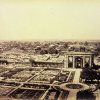SAMUEL BOURNE (1834 – 1912)
It was the love of photography and an enduring romance with the idea of the ‘picturesque’ that drove Samuel Bourne to relinquish his post of a bank clerk in Nottingham and travel across continents to India, a land that he knew of only through ‘views’ produced by the likes of William Hodges and Thomas and William Daniell. But it was also a land he was to appropriate as his own, through the extensive photographic expeditions he undertook across the length and breadth of the vast sub-continent.
Bourne’s arrivals in India as a photographer would be considered ‘late’ if one were to compare it to other known photographers of the time. It was five years after Felice Beato had already set foot in the country. The likes of John Tressider, John Murray, Linnaeus Tripe and even Donald Mcfarlane had already established themselves as reputed individuals within the small circle of European society that patronised their practice apart from commissions they undertook for the East India Company.
Bourne, however, was to leave an indelible mark on the landscape of photography in India, broadening its horizon both in terms of the aesthetics of photographic composition as well as its commercial value and consumption. A maverick practitioner, his bold expeditions through often inhospitable terrain, recounted through his lens, tells a compelling story about the journey of a photographer and the lure of the photographic image.
The Alkazi Collection of Photography preserves a rich collection of photographs Samuel Bourne composed on his journeys to the Himalayas, to the North Western Provinces as well as those he photographed in Calcutta, Lucknow, Delhi, Lahore and a host of other cities and towns he travelled to. Apart from these the archive also maintains a fantastic collection of Bourne and Shepherd studio portraits that were taken in the three different studios he set up for the duration of his long stay in India.
In 1862 he gave up his work at the bank and travelled to India, arriving in January 1863. Initially disappointed by Calcutta, he quickly reached Simla, where he set up his studio in partnership with a Mr. Howard, as ‘Howard & Bourne’. Later the same year, Charles Shepherd, of the firm Shepherd & Robertson, arrived in Simla and joined the partnership, creating Howard, Bourne & Shepherd. By 1865, the business had become Bourne & Shepherd. Two additional studios were subsequently established, in Calcutta (1867) and Bombay (1870).
Bourne is particularly known for the three expeditions he undertook in the Himalayas. In keeping with his love of the ‘picturesque’ and ‘sublime’, Samuel Bourne achieved his greatest success and distinction as a photographer through the images he composed in the course of these three known and celebrated journeys. His negotiations with the landscape and the thrill of the obstacles he faced were amply reflected in the letters he wrote to the British Journal of Photography. Of the Himalayas he states “With scenery like this, it is very difficult to deal with the camera; it is altogether too gigantic and too stupendous to be brought within the limits imposed on photography.”
His first and second trips, conducted in 1863 and 1864, covered the Himalayan foothills near Simla and Kashmir; the third trip, in 1866, is now famous for the trek through Spiti and Bourne’s views of the Manirung Pass at an altitude of 18,600 feet.
He returned briefly to England in 1867 to marry Mary Tolley. On his return to India, he visited South India where he recorded the Hindu temples of Tamil Nadu and the hill station of Ootacamund.
In 1870, Bourne left India to settle in Nottingham, where he built up a highly successful cotton doubling business. He continued to photograph as an amateur, producing views of his travels in the south of France.
Samuel Bourne passed away on April 12th, 1912.

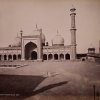

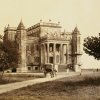
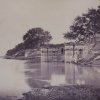
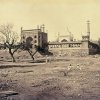

![Cascade on the Scinde River, Cashmere [Kashmir], Albumen Print, c. 1865, 237 x 293 mm, ACP: 94.126.0010](https://alkazifoundation.org/wp-content/plugins/wp-simple-galleries/timthumb.php?src=https://alkazifoundation.org/wp-content/uploads/7-2.jpg&q=85&w=100&h=100)
